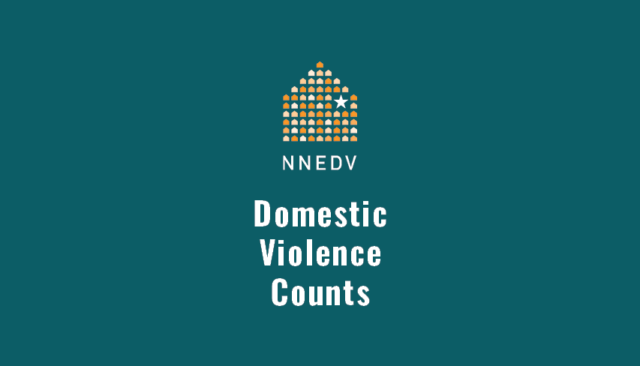Domestic Violence Counts: Methodology and Understanding the Data
Please click here to read the latest Domestic Violence Counts Report.
Methodology
The Domestic Violence Counts Survey provides a point-in-time, noninvasive, unduplicated record of individuals who access domestic violence services during a single 24-hour period. Developed in 2006 by a team of experts in the field of domestic violence, the goal of the survey is to count the number of individuals who contact domestic violence programs in search of assistance.
The “snapshot” methodology provides an unduplicated count because a victim is unlikely to access services at more than one domestic violence program during a 24-hour period. It is impossible for a victim to be sheltered in two programs at the same time, and it is unlikely that a victim will travel from one primary-purpose domestic violence program to another on the same day. Programs are often located far apart and serve wide geographic areas.
The Domestic Violence Counts Survey is noninvasive and takes into account the dangerous nature of domestic violence and the need to prioritize victim safety and confidentiality. The report is an aggregate nationwide (and state- and territory-wide) count of victims who seek services and an aggregate count of services programs provide.
Understanding the Data
Does this mean that the number of people served on the day of the survey were victims of domestic violence on that day?
No. Because we survey only domestic violence programs, the survey doesn’t count how many people were victims of domestic violence on the designated day. It records how many people sought services from domestic violence programs on the day of the survey. We don’t know, definitively, how many victims of domestic violence there are on any given day because not all victims seek services immediately after experiencing abuse.
Can we extrapolate and project the number of people served if 100% of local programs participated in Domestic Violence Counts?
No. With a response rate of less than 100%, it is not possible to extrapolate since the percentage of programs that did not participate may have been the smallest, least-staffed programs, or they could be extremely large and overly busy programs. Extrapolating the current data to project or estimate a total number of victims seeking services on this day would likely produce an inaccurate total count. Any attempt at extrapolation or projection would require a much closer analysis of nonparticipating programs than this study intends or attempts to make.
This count was only for one day. Can I multiply it by 365 and get an average estimate of the number of victims who sought services in a year?
No. The Domestic Violence Counts Report provides an unduplicated count of victims who seek services in just one day. Throughout the year, some victims might only use services once a year, while others may access support many times over the course of a year. In addition, most programs experience days when many victims seek services and some days when few victims seek services. Thus, multiplying the one-day total by 365 to create an annual number would be inaccurate.
Why can’t you just do an annual unduplicated count?
Getting an unduplicated annual count is impossible because you’d have to ensure you’re not counting the same person twice. To do so, domestic violence programs would need to collect in-depth, personally identifying information about victims and share that information with other domestic violence programs. This disclosure would be a violation of federal law and many state laws. In addition, victims of domestic violence often suffer violence from abusers who believe it is their right to control and monitor them. Because we respect survivors’ privacy, confidentiality, safety, and dignity, we will not do so.
I still have questions. Who can I contact?
Please contact the Domestic Violence Counts team at DVCounts@NNEDV.org.

